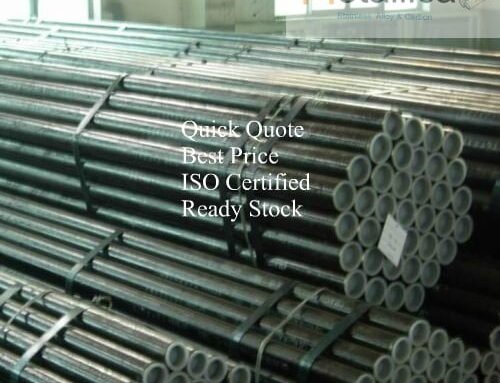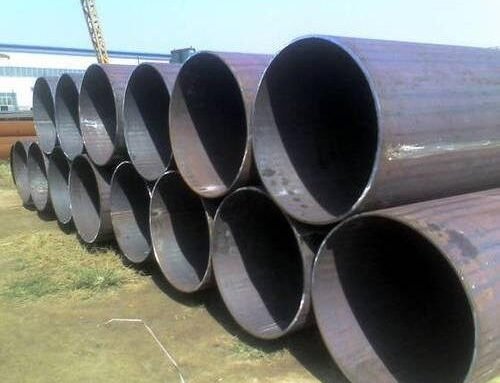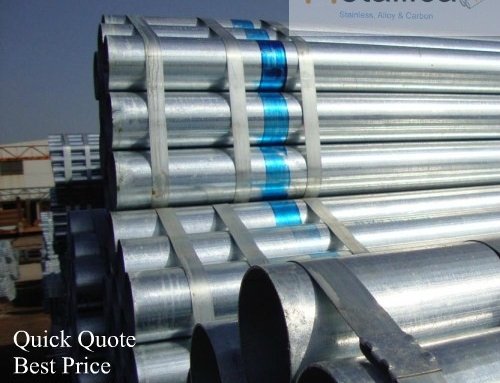History of Steel Pipes

In 1830, the first furnace was built in the United States for making wrought iron pipe. Soon thereafter, more furnaces came into production. The demand was enormous because of the need for water distribution in fast-growing cities. Those wrought iron pipes were in small diameters and few sizes. Production was limited because iron was not available in large quantities.
The Age of Steel was born in 1855 in England, where Sir Henry Bessemer patented a process for production of steel. Development of the open hearth furnace in 1861 made inexpensive steel available in large quantities — thousands of tons. Before then, steel had been available only by the pound.
The third major development was Lock-Bar steel pipe in 30-foot lengths. It was first fabricated in 1905 in New York. Two semi-circular pipe halves were joined by inserting the edges of each into two longitudinal lock-bars with an H-shaped cross section. The edges of the pipe halves were planed and up-set to a slightly greater thickness to form a shoulder for engaging the lock-bar. The lock-bar was then closed under 350 tons per foot of length.
The fourth major development was automatic electric welding. Electric welding started as a novelty in 1920, but made great progress during the 1930s, when welding machines and fluxes were developed. From 1920 to 1940, approximately 7 million feet of welded steel pipe were installed. During World War II, virtually all steel production was diverted into military equipment, arms and armament.
Steel pipe has been used for water lines in the United States since the early 1850s (Elliot 1922). The pipe was first manufactured by rolling steel sheets or plates into shape and riveting the seams. This method of fabrication continued with improvements into the 1930s. Pipe wall thicknesses could be readily varied to fit the different pressure heads of a pipeline profile.
From available records, steel pipelines installed more than 100 years ago are still in service. A significant percentage of that steel pipe is still serviceable. Many of those old pipelines were replaced only because larger pipelines were needed to meet the demand for piped-in water and other piped-in services. The demand for pipes was felt worldwide, but was especially acute in industrialized nations.
Steel Pipe Applications
Steel water pipe meeting the requirements of appropriate AWWA standards can be used for many applications such as:-
- Aqueducts
- Treatment-plant piping
- Supply lines
- Self-supporting spans
- Transmission mains
- Force mains
- Distribution mains
- Circulating-water lines
- Penstocks
- Underwater crossings, intakes, and outfalls
Other Steel Pipe Applications:
- Various Industries – Construction, in particular, has benefited from the fact that steel is a more practical alternative to other metals, like iron. Steel is corrosion resistant, making them more durable and cost-effective. It also means that you can use these pipes in areas constantly exposed to the elements because it’s able to withstand them. Given all these benefits, here are some of the common uses of steel pipes.
- Domestic – Steel pipes are a common choice for many homes because they are more durable, meaning you won’t have to change them every couple of seasons. Any plumber will recommend a stainless steel pipe for your shower, tap and the rest of the house, especially exposed pipes because they’re more enduring of the elements. They’re also known to be more durable. Its wide use is proven by how commonly you see it in hardware stores and DIY showrooms.
- Medical – If doctors use it, it must be safe, so that’s another tick for steel. Steel pipes are so popular in the medical field that they have used them for everything, including supporting fractured bones, medical machinery, surgical tools, dental procedures and even in pharmaceutical. Steel’s varied application is a testament to its durability, safety, and versatility.
- Factories – Because factories have to ensure the safety of what they are producing, they have to make sure that they’re equipment are of top caliber. That’s why most of them use steel pipes, from assembly lines and water treatment facilities to dairy and food processing and the refineries themselves.
- Construction – This is one of the most obvious uses of steel pipes. They are the go-to for many construction companies because they’re malleable and sturdy, at the same time. Steel pipes are used as construction piling, to support the weight of heavy buildings when the soil is too weak. It’s also used on the building itself and even its architectural design. Steel pipes are also used to construct ships, the ship yard where they’re kept, oil refineries and even space stations. Whether the construction is on land, over the water, or in space, steel pipes are a quality choice.
Heat Treatment for Steels
Steels respond to a variety of heat treatments that produce desirable characteristics. These heat treatments can be divided into slow cooling treatments and rapid cooling treatments. Slow cooling treatments, such as annealing, normalizing, and stress relieving, decrease hardness and promote uniformity of structure. Rapid cooling treatments, such as quenching and tempering, increase strength, hardness, and toughness. Heat treatments of base metal are generally mill options or ASTM requirements.
- Annealing
- Normalizing
- Stress relieving
- Quenching and tempering
- Controlled rolling
- Controlled finishing-temperature rolling
Established in 1975, the Metallica Metals Group has its operations spread across major cities in India. We are a pioneer in the stainless steel pipes, seamless steel pipes, carbon steel pipes and alloy steel pipes manufacturing and processing industry. Our products are exported to over 70 countries across the world, while in India we have supplies to even the remote areas. With over 250 tons of sale in stainless steel and carbon steel pipes every day, Metallica has emerged as a prominent vendor for many buyers in India and Overseas.
We procure significant quantities of materials from Indian carbon steel pipe mills and overseas manufacturers of stainless steel pipes. Given our extensive network for sourcing the best quality goods at most competitive prices, we are a preferred seller of steel products for various turnkey projects in India and Worldwide.







Leave A Comment